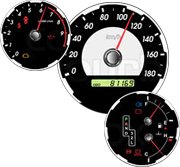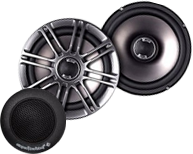Chevrolet announces a more powerful 2014 Corvette Stingray
Chevrolet officially revealed the all-new Corvette Stingray. This considered to be the seventh generation (C7) Corvette. They presented during the unveiling of the sports car its upscale interior, historic nameplate and more powerful Corvette ever.
EXTERIOR
The American car manufacturer gives the new model look crisps and more angular even though it still uses the long hood and short rear deck proportions which serves as the signature or the character of the past generations of Corvette.
Even then they added some eye appealing touches which include the tapered greenhouse, brand new rear-quarter windows which is closely grouped and center mounted quad exhaust pipes.
Compared to the previous models the split rear window is gone and the traditional rounded taillights already replaced with the new rhomboid units, which are grouped with functional vents that connect with air inlets mounted on the tops of the rear fenders.
INTERIOR
Corvette Stingray interior is now more improved and features premium trimmings such as Nappa leather, micro-suede, aluminum and carbon fiber which can be optionally specified. Comfort-oriented “GT” seats and “Competition Sport” are the two seating choices being offered.
Eight-inch configurable screens are mounted at the center of the instrument cluster and at the top of the center stack, which is canted towards the driver and fitted with Corvette-specific HVAC controls.
Here is the video for you to see the unveiling of this sports car at the 2013 North American International Auto Show.
PERFORMANCE AND ENGINE
Empower the C7 Corvette Stingray to sprint from zero-to-60 mph in under 4.0 seconds, and with over 400 lb-ft of twist on tap between 2,000 and 4,000 rpm, the LT1 also provides plenty of mid-range output.
While the tried-and-true pushrod configuration remains, the LT1 features direct-injection, variable valve timing and a fairly high 11.5:1 compression ratio. A dry sump oil system will be an optional extra in place of a standard wet sump unit.
Also part of the LT1 package is a cylinder deactivation system that saves fuel by effectively turning the 6.2-liter V8 into a 3.1-liter V4. Chevrolet says the system will help the LT1 better the less-powerful LS3′s 26-mpg highway rating, although official numbers are not yet available.
The Corvette uses a seven-speed manual transmission. It features a “Active Rev Matching” system that provides rev-matched upshifts and downshifts. It can be switched on or off via steering wheel-mounted paddles shifters – an unusual touch for a manual-equipped vehicle.
The optional automatic transmission is a six-speed unit, not the eight that was previously rumored. Additional gears after the first six offer negligible efficiency benefits, Chevrolet says.
New to the Corvette is the Driver Mode Selector, which lets drivers optimize the sports car for any given driving situation. It offers five different modes: Tour mode is the default setting for day to day driving; Weather mode is intended to provide additional confidence in rain or snow; Eco mode helps achieve maximum fuel efficiency; Sport mode is for spirited road driving and Track mode is, as one would expect, for track use.
The Drive Mode Selector modifies 12 different vehicle settings, including steering assist effort, throttle responsiveness, launch control calibrations stability control settings, traction control parameters, exhaust noise levels, active fuel management settings, Performance Traction Management configurations, automatic transmission shift points, electronic limited-slip engagement and Magnetic Ride Control damper settings (the last two are Z51-exclusive features). Additionally, the gauge cluster changes to display information pertinent to the selected drive mode.
So expect a more track-friendly Corvette.
Chevrolet says that the 2014 Corvette Stingray will hit the market in the second half of 2013; watch for fuel-economy and pricing details to be released in the coming months.
Share this page and let your friends know about it.
Photos copyright are not own by CebuAutoBlog.com, the original owner still have all the rights of the photos being used and CebuAutoBlog.com will removed them from this blog if it violates the copyright law.


















































